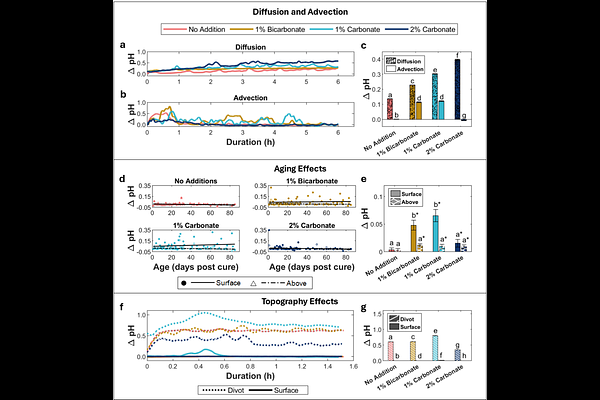Local alkalinity enhancement using artificial substrates increases survivorship of early-stage coral recruits

Local alkalinity enhancement using artificial substrates increases survivorship of early-stage coral recruits
Ruszczyk, M.; Rodriguez, S.; Tuen, M.; Rux, K.; Chandragiri, S.; Stickley, M.; Haus, B. K.; Baker, A. C.; Miller, M.; Suraneni, P.; Langdon, C.; Prakash, V. N.
AbstractEfforts to restore coral reefs using sexually derived coral recruits are often hindered by their low survivorship and growth, hence scalable interventions to improve these parameters are urgently needed. Here we developed novel settlement substrates that modify the local chemical and hydrodynamic environments and provide local alkalinity enhancement (AE) within the laminar boundary layer to aid in coral restoration. Cement tiles with four different chemistries and two different surface topographies were tested in a novel flume system to quantify their ability to change local pH under reef-like conditions and their effect on larval settlement, survivorship, and growth of the endangered Caribbean coral, Orbicella faveolata. Chemistry had a minimal effect on the initial settlement of coral larvae, with textured tiles preferred over smooth tiles. However, substrates that created a more alkaline local environment increased post-settlement survivorship. The increased survivorship of O. faveolata recruits on AE tiles was not due to increased growth on AE tiles, although trends in growth were dependent on chemistry and topography of tiles. Our results indicate that mixing sodium bicarbonate into the cement used to fabricate artificial reef structures could be an effective means to enhance the development of coral cover.